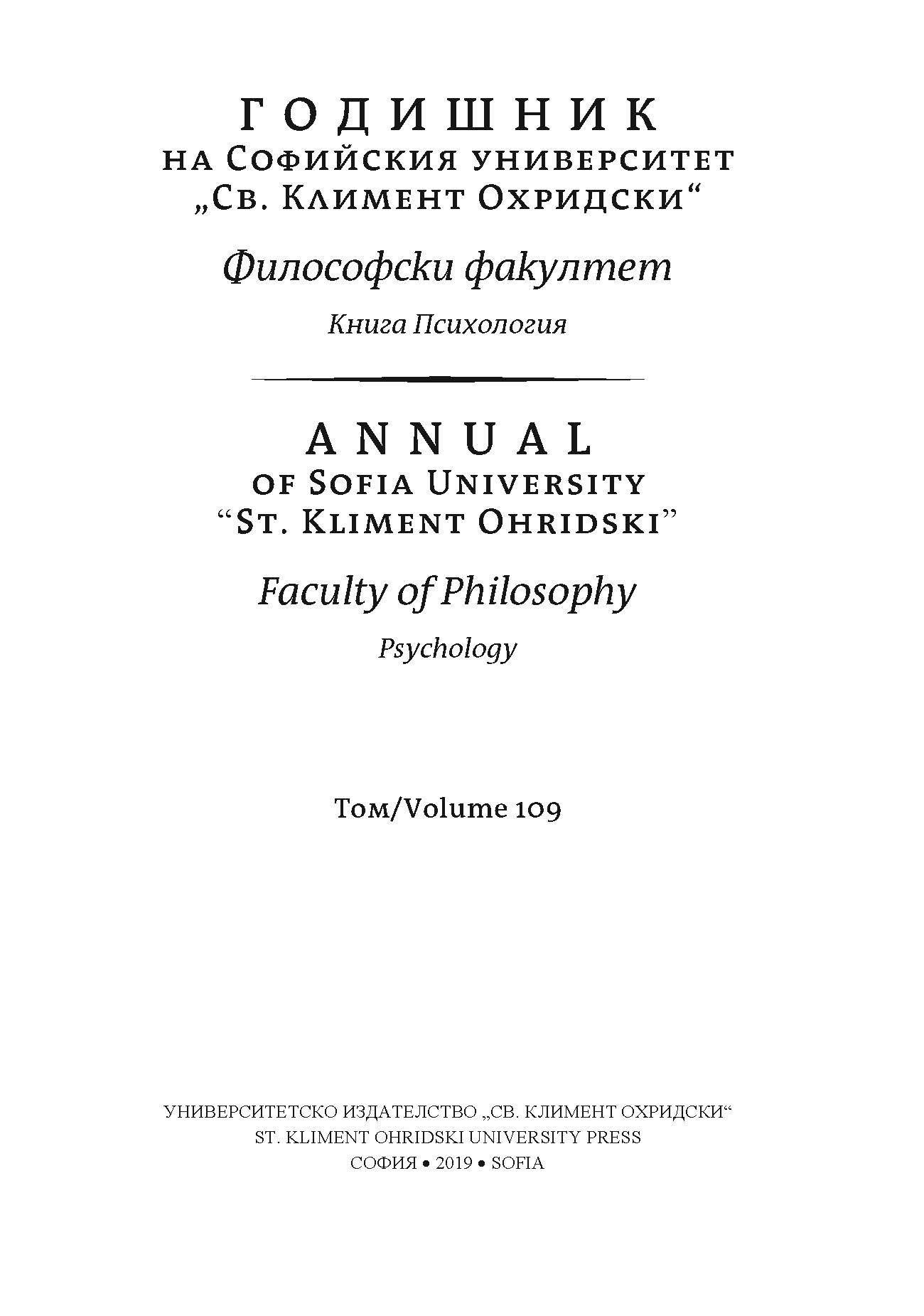Личностен въпросник за DSM-5: съкратена версия (PID-5-SF). Факторна структура, надеждност и валидност в българска юношеска извадка
Personality inventory for DSM-5: short form. Factor structure, reliability, and validity in Bulgarian adolescent sample
Author(s): Plamen Kalchev, Svetlina KolevaSubject(s): Social Sciences, Psychology, Individual Psychology, Developmental Psychology, Experimental Pschology
Published by: Софийски университет »Св. Климент Охридски«
Keywords: Personality inventory for DSM-5; Bulgarian adolescent sample; factor structure; reliability; validity
Summary/Abstract: Current study presents Bulgarian adaptation for adolescence of Short 100 items Version of Personality Inventory for DSM-5 (PID-5-SF, Maples et al., 2015), based on the alternative model on personality disorders in DSM-5. This dimensional model differentiates pathological personality traits (25 facets), organized in five broad domains: Negative Affect, Detachment, Antagonism, Psychotism, and Disinhibition. Data are collected on 1333 adolescents (1103 listwise). A scale of inconsistent responding was constructed, and sample size was reduced (N=1050), 421 boys, 608 girls, and 21 provided no gender information, age ranged from 14 to 18, X=15,98; SD=1,19. Reliability of PID-5-SF is satisfactory, varying between ɑ=0,811 and 0,907 for domains, and for facets from ɑ=0,544 to 0,896 (median 0,769). Factor structure was analyzed and validated in separate samples with exploratory and confirmatory factor analyses. Expected five-factor structure was confirmed, with evidence suggesting change in distribution in four facets: Restricted affectivity, Suspiciousness, Risk taking, and Rigid perfectionism. Results state for a different structure of the Bulgarian version of PID-5-SF on all domains, except Psychotism. Validity was tested with correlation and regression analyses with Assessment of Sadistic Personality (ASP, Plouffe et al., 2017; Kalchev & Koleva, 2017). On domain level, Antagonism was identified as the main predictor of everyday sadism. On facet level, leading effects were showed by Callousness and Deceitfulness, weaker predictive power by Grandiosity (from Antagonism) and Perceptual dysregulation (from Psychotism).
Journal: Годишник на Софийския университет „Св. Климент Охридски“. Философски факултет. Психология
- Issue Year: 109/2019
- Issue No: 1
- Page Range: 63-114
- Page Count: 52
- Language: Bulgarian

